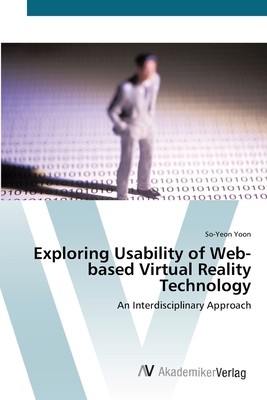
- We will send in 10–14 business days.
- Author: So-Yeon Yoon
- Publisher: AV Akademikerverlag
- ISBN-10: 3639417216
- ISBN-13: 9783639417210
- Format: 15.2 x 22.9 x 0.9 cm, softcover
- Language: English
- SAVE -10% with code: EXTRA
Exploring Usability of Web-based Virtual Reality Technology (e-book) (used book) | bookbook.eu
Reviews
Description
Revision with unchanged content. As Web-based interactive 3D graphics, popularly referred to as Virtual Reality (VR), continue to become more affordable, research and development groups in various fields have been adopting Web-based VR technology. Despite sub-stan-tial adoption, how and how much the technology benefits target users and the providers who choose to adapt the technology is not well un-der-stood. Previous research has established that VR provides users with unique human-computer interaction. However, little is known about how users ex-pe-rience the Web-based VR technology and how user-system interaction con-tri-bu-tes to system usability. This book investigates user perception of Web-based VR comparing to conventional 2D graphics and system usability affec-ted by the user-system interaction process. The impact of Web-based VR on sy-stem usability was empirically examined from an integrated view of tech-no-lo-gy acceptance in information systems and human-computer interaction. In addition, the impact of user characteristics on user-system interaction while using a VR system was examined. This book provides new knowledge about usability, sense of presence and tech-nology acceptance in VR and provides insights for future research, which should be important to anyone designing, developing and evaluating a VR system in general and to an electronic commerce or market research system in particular.
EXTRA 10 % discount with code: EXTRA
The promotion ends in 20d.15:32:52
The discount code is valid when purchasing from 10 €. Discounts do not stack.
- Author: So-Yeon Yoon
- Publisher: AV Akademikerverlag
- ISBN-10: 3639417216
- ISBN-13: 9783639417210
- Format: 15.2 x 22.9 x 0.9 cm, softcover
- Language: English English
Revision with unchanged content. As Web-based interactive 3D graphics, popularly referred to as Virtual Reality (VR), continue to become more affordable, research and development groups in various fields have been adopting Web-based VR technology. Despite sub-stan-tial adoption, how and how much the technology benefits target users and the providers who choose to adapt the technology is not well un-der-stood. Previous research has established that VR provides users with unique human-computer interaction. However, little is known about how users ex-pe-rience the Web-based VR technology and how user-system interaction con-tri-bu-tes to system usability. This book investigates user perception of Web-based VR comparing to conventional 2D graphics and system usability affec-ted by the user-system interaction process. The impact of Web-based VR on sy-stem usability was empirically examined from an integrated view of tech-no-lo-gy acceptance in information systems and human-computer interaction. In addition, the impact of user characteristics on user-system interaction while using a VR system was examined. This book provides new knowledge about usability, sense of presence and tech-nology acceptance in VR and provides insights for future research, which should be important to anyone designing, developing and evaluating a VR system in general and to an electronic commerce or market research system in particular.


Reviews